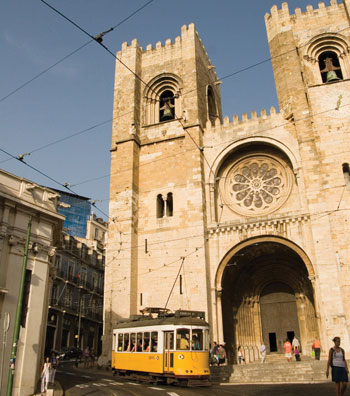
A few weeks ago my son and I took the new Dubai Tram for the first time. I’m somewhat of a jaded public transport user having endured London’s rickety tube network of the post-Thatcher years, but my son continues to be fascinated by metros, trains, and now trams, in a way that only a five year old can be. For him, a ride on the Dubai metro easily beats watching Dora the Explorer on TV or playing in the park.
I grew up with trams. I think the first ever mode of public transport I experienced as a child was a tram. Back then at home, taxis were for very rich people or special occasions. The common man and woman took public transport! Trams were everywhere. Faster than busses, they roamed the city and you could easily get just about anywhere in and around the city centre and the closer suburbs on trams. Later, trams were increasingly replaced by busses – supposedly for cost reasons. I don’t know about you, but I have always felt that inner-city busses – unlike their long-distance counterparts and with the possible exception of London’s Routemasters – have little to no soul. They’re boxes on wheels; they don’t gleam and they haven’t got fancy bells. They get you from A to B in a utilitarian fashion. Trams, on the other hand, transport you to places in a certain style. Sitting in a tram, you don’t feel like just another road user. You feel somehow elevated, probably because you’ve got your own special tracks.Ask anybody who has grown up in a larger and older city abroad and their childhood memories likely feature public transport conveyances of one type or the other. Trams, trains, busses, metros, boats give cities character and not only make them easier to navigate, but also provide material for stories, opportunities for chance meetings, and act as a great equalizer – in a crowded tram, the corporate big shot clings on to the handrail in much the same manner as the office clerk next to him.I didn’t really get this feeling on Dubai’s new tram, though. It’s just too clean and efficient. That’s undoubtedly a good thing, of course, but it’ll probably take a few more years before it has build up that certain patina that makes it an intrinsic part of the city it passes through. That’s where Dubai’s abras have the advantage – they’ve been around for a few more years.Still, I welcome the GCC’s public transport revolution of recent years. Dubai’s metro and tram will soon be joined by similar systems in Abu Dhabi and other GCC cities. Saudi Arabia already has a public train network that works very satisfactorily and may one day connect the Kingdom with other GCC countries like Qatar and the UAE. Rails connect people in a manner that roads often don’t manage and there’s something oddly romantic about reading stories of the heydays of train travel when you could board a train in London and embark in far-flung places like Damascus or Baghdad. I firmly believe that public transport adds to a city’s and country’s charm and makes it more livable. It’s fascinating to see new public transport networks springing up around me and, given a few more journeys on Dubai’s tram or the trains in KSA, I might even regain my childhood fascination with this mode of transport. In the meantime, I wish it wasn’t so far to walk to the nearest bus stop… By Martin Kubler